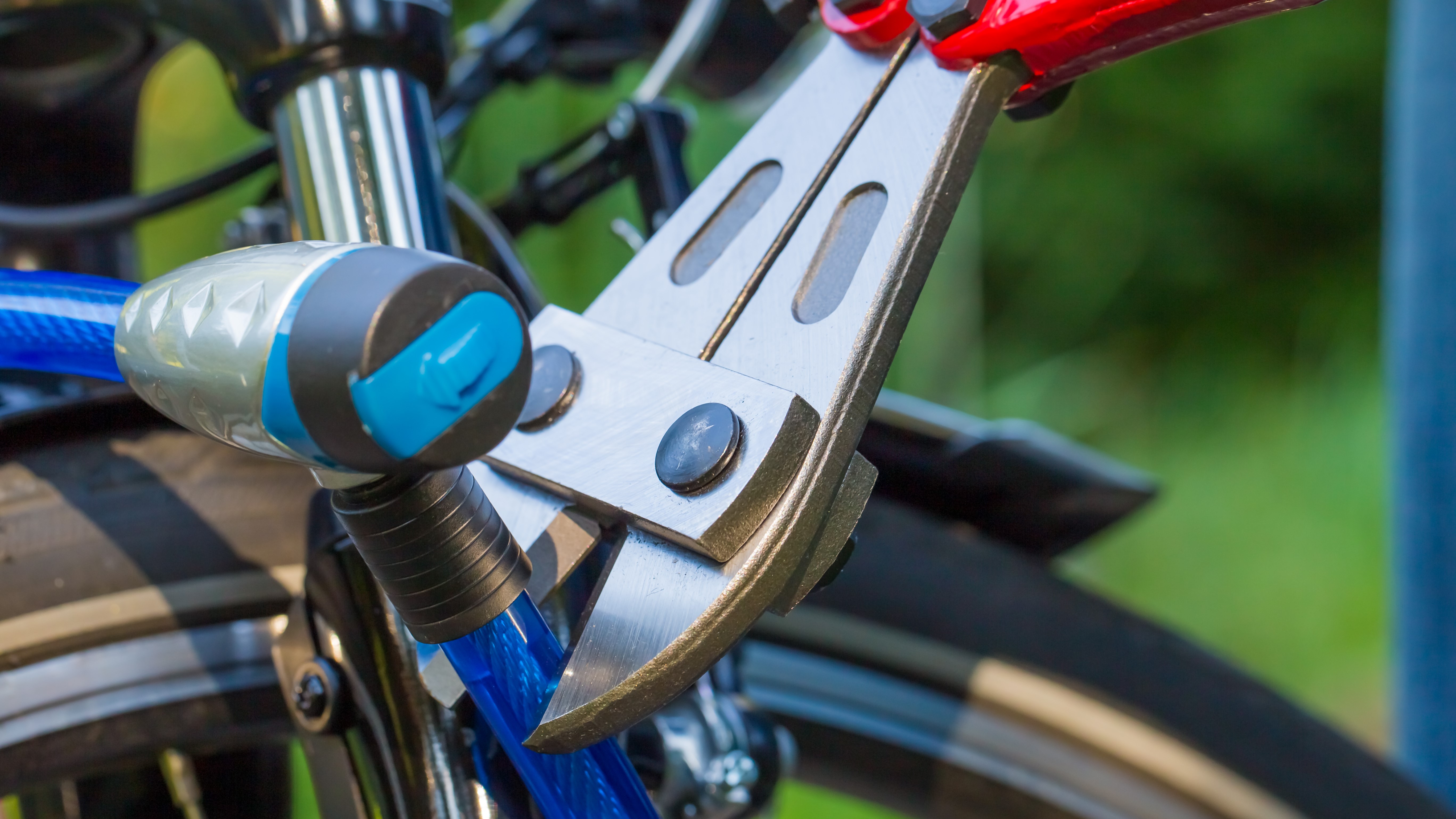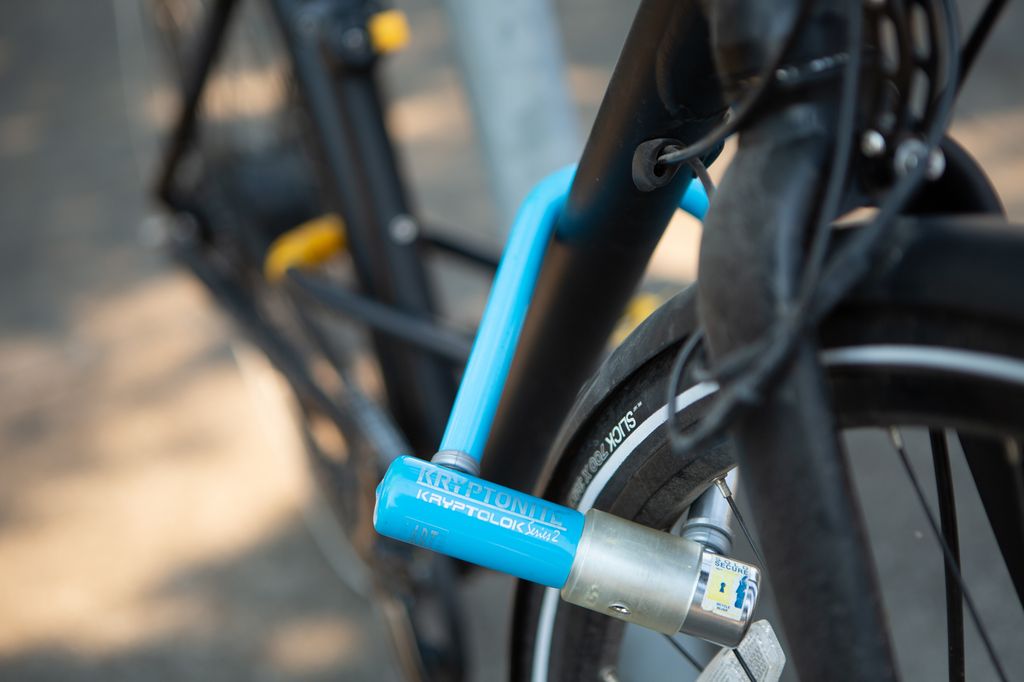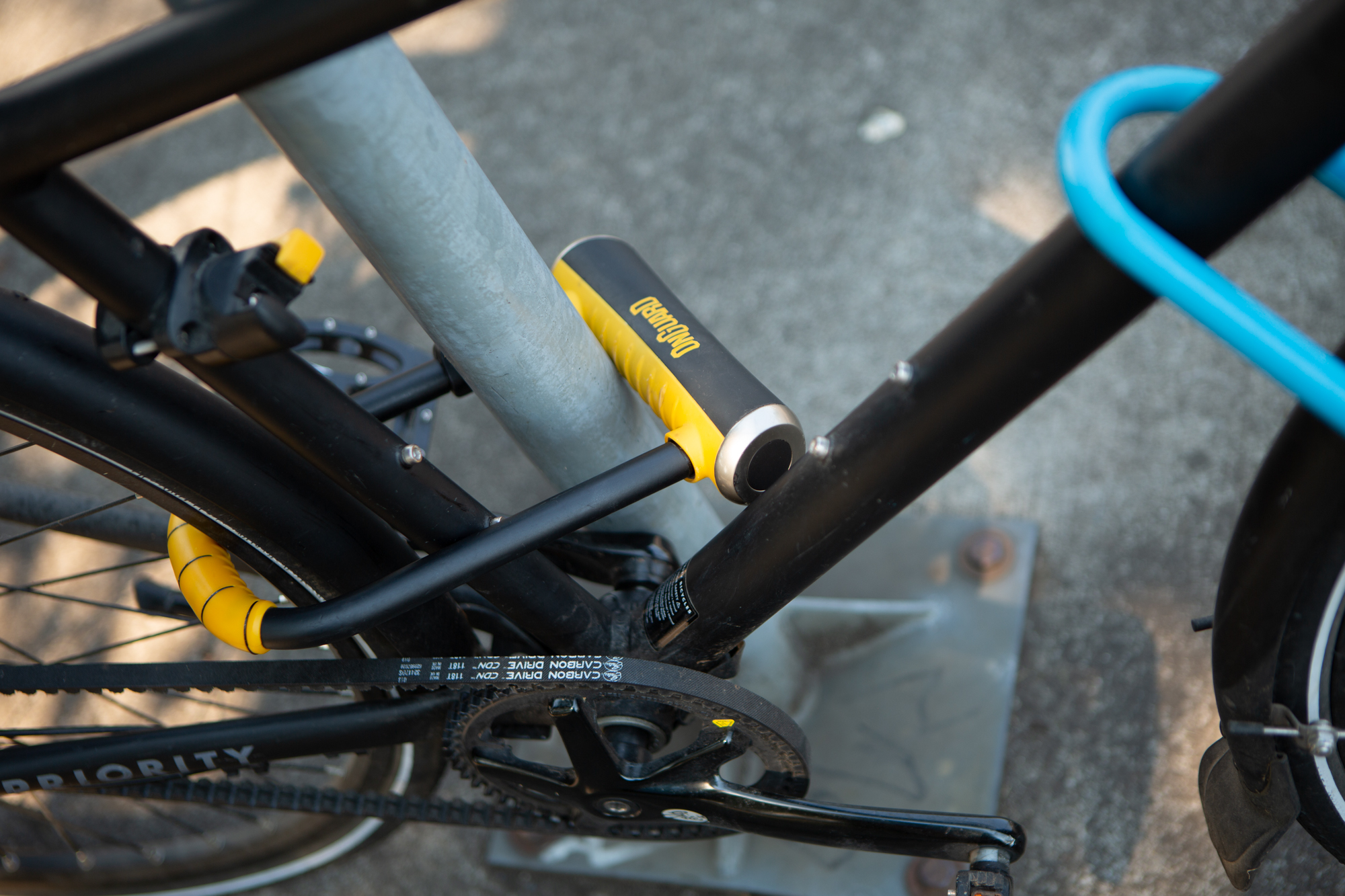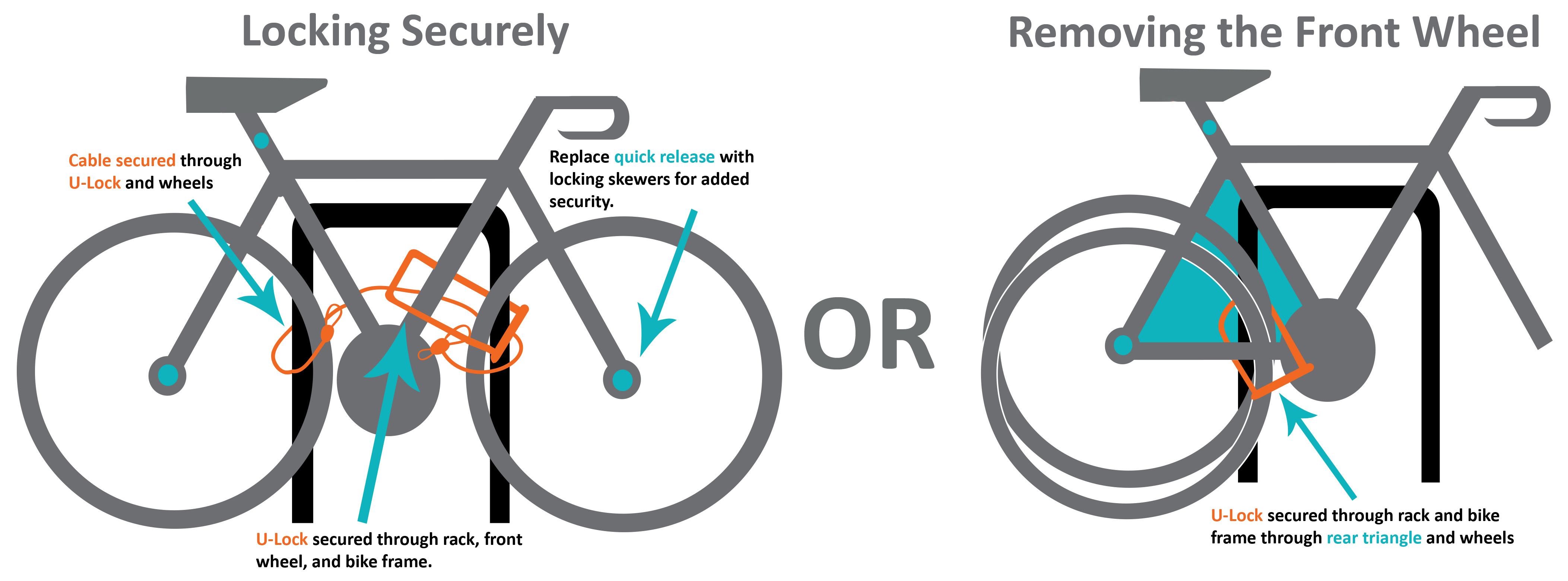Why Proper Bike Locking is Crucial
Bike theft is a growing concern for cyclists worldwide, with thousands of bikes stolen every year. In fact, according to the National Bike Registry, over 1.5 million bikes are stolen annually in the United States alone. The financial impact of bike theft can be significant, with the average cost of a stolen bike ranging from $200 to over $1,000. Moreover, the emotional impact of losing a bike can be just as devastating, especially for those who rely on their bike as a primary mode of transportation.
Proper bike locking is essential to prevent theft and protect your investment. A good lock can deter thieves and provide peace of mind, knowing that your bike is secure. However, with so many locking options available, it can be overwhelming to choose the right one. In this article, we will explore the importance of proper bike locking and provide tips on how to lock a bike effectively.
One of the main reasons bike theft is so prevalent is that many cyclists do not take the necessary steps to secure their bikes. A common mistake is to lock the bike to a weak object, such as a small tree or a street sign. Thieves can easily lift the bike over the object or break the lock. Another mistake is to use a low-quality lock that can be easily cut or broken. By investing in a high-quality lock and following proper locking techniques, cyclists can significantly reduce the risk of theft.
In addition to the financial and emotional impact, bike theft can also have a significant impact on the environment. When a bike is stolen, it often ends up in a landfill or is sold for scrap metal. By locking your bike properly, you can help reduce the number of bikes that end up in landfills and promote sustainable transportation.
So, how can you lock your bike effectively? The first step is to choose the right lock. There are several types of locks available, including U-locks, chain locks, and cable locks. Each type of lock has its pros and cons, and the right lock for you will depend on your specific needs and preferences. In the next section, we will explore the different types of locks available and provide tips on how to choose the right one for your bike.
Choosing the Right Lock for Your Bike
When it comes to locking your bike, choosing the right lock is crucial. With so many options available, it can be overwhelming to decide which lock is best for your bike. In this section, we will explore the different types of bike locks available, including U-locks, chain locks, and cable locks. We will discuss the pros and cons of each type and provide recommendations for different types of bikes and riding styles.
U-locks are one of the most popular types of bike locks. They are made of a sturdy metal rod that is shaped like a “U” and are often considered to be the most secure type of lock. U-locks are ideal for high-end bikes or for bikes that are left in high-risk areas. However, they can be heavy and bulky, making them less convenient for commuters or for bikes that need to be locked in tight spaces.
Chain locks are another popular type of bike lock. They are made of a series of metal links that are connected together and are often more flexible than U-locks. Chain locks are ideal for bikes that need to be locked in tight spaces or for bikes that are left in low-risk areas. However, they can be more vulnerable to cutting and are often less secure than U-locks.
Cable locks are a lightweight and convenient option for locking your bike. They are made of a thin metal cable that can be wrapped around the bike and locked in place. Cable locks are ideal for commuters or for bikes that are left in low-risk areas. However, they can be more vulnerable to cutting and are often less secure than U-locks or chain locks.
When choosing a lock, it’s also important to consider the type of bike you have and your riding style. For example, if you have a high-end road bike, you may want to consider a U-lock for maximum security. On the other hand, if you have a commuter bike that you lock in a low-risk area, a cable lock may be sufficient.
In addition to the type of lock, it’s also important to consider the quality of the lock. Look for locks that are made of high-quality materials and have a good reputation for security. Some popular brands of bike locks include Abus, Kryptonite, and OnGuard.
Finally, it’s also important to consider the price of the lock. While it may be tempting to go for the cheapest option, a good lock is an investment in the security of your bike. Look for locks that offer a good balance of security and price.
How to Lock Your Bike Like a Pro
Locking your bike properly is crucial to prevent theft and ensure your bike remains secure. Here’s a step-by-step guide on how to lock your bike like a pro:
Step 1: Choose a Secure Location
When locking your bike, choose a location that is well-lit, visible, and secure. Avoid locking your bike in isolated areas or to weak objects that can be easily broken or lifted.
Step 2: Secure the Frame
The frame of your bike is the most valuable part, so make sure to secure it properly. Use a U-lock or chain lock to lock the frame to a secure object, such as a bike rack or street sign.
Step 3: Lock the Wheels
Use a secondary lock to secure the wheels of your bike. This can be a cable lock or a chain lock. Make sure to lock the wheels to the frame or to a secure object to prevent them from being stolen.
Step 4: Secure Other Components
In addition to the frame and wheels, make sure to secure other valuable components of your bike, such as the seatpost, handlebars, and pedals. Use a cable lock or chain lock to secure these components to the frame or to a secure object.
Step 5: Use Multiple Locks
Using multiple locks can provide an additional layer of security for your bike. Consider using a combination of U-locks, chain locks, and cable locks to secure different parts of your bike.
Step 6: Lock Your Bike in Different Environments
When locking your bike in different environments, such as urban areas, rural areas, or bike parking facilities, make sure to adapt your locking strategy to the specific environment. For example, in urban areas, you may want to use a U-lock to secure your bike to a bike rack, while in rural areas, you may want to use a chain lock to secure your bike to a fence or gate.
By following these steps, you can ensure your bike is properly locked and secure, reducing the risk of theft and providing peace of mind when you’re not with your bike.
Common Mistakes to Avoid When Locking Your Bike
When it comes to locking your bike, there are several common mistakes that people make that can increase the risk of theft. In this section, we will discuss some of the most common mistakes to avoid when locking your bike.
Locking to Weak Objects
One of the most common mistakes people make when locking their bikes is locking to weak objects. This can include locking to small trees, street signs, or other objects that can be easily broken or lifted. Instead, look for sturdy objects such as bike racks, lampposts, or fences to lock your bike to.
Using Low-Quality Locks
Using low-quality locks is another common mistake that people make when locking their bikes. Low-quality locks can be easily broken or cut, making it easy for thieves to steal your bike. Instead, invest in a high-quality lock that is designed to protect your bike.
Not Securing All Parts of the Bike
Not securing all parts of the bike is another common mistake that people make when locking their bikes. This can include not locking the wheels, seatpost, or other components. Make sure to secure all parts of your bike to prevent theft.
Locking in Isolated Areas
Locking your bike in isolated areas is another common mistake that people make. Isolated areas can be more vulnerable to theft, so try to lock your bike in well-lit and populated areas instead.
Not Registering Your Bike
Not registering your bike is another common mistake that people make. Registering your bike can help the police identify and recover your bike if it is stolen. Make sure to register your bike and keep a record of the serial number and other identifying features.
By avoiding these common mistakes, you can help protect your bike from theft and ensure that it remains secure. Remember to always use a high-quality lock, secure all parts of the bike, and lock in well-lit and populated areas.
Additional Security Measures to Consider
In addition to using a high-quality lock, there are several other security measures you can take to protect your bike. In this section, we will discuss some of the most effective additional security measures to consider.
Registering Your Bike
Registering your bike is an important step in protecting it from theft. By registering your bike, you can provide the police with valuable information that can help them identify and recover your bike if it is stolen. You can register your bike with the local police department or with a national bike registry.
Using a GPS Tracking Device
A GPS tracking device can be a valuable tool in protecting your bike from theft. These devices can be attached to your bike and can provide real-time location information if your bike is stolen. This can help the police track down your bike and recover it more quickly.
Keeping a Record of Your Bike’s Serial Number and Other Identifying Features
Keeping a record of your bike’s serial number and other identifying features can be helpful in identifying and recovering your bike if it is stolen. Make sure to keep a record of your bike’s serial number, as well as any other identifying features such as the make, model, and color.
Using a Bike Alarm
A bike alarm can be a valuable tool in protecting your bike from theft. These alarms can be attached to your bike and can sound a loud alarm if someone tries to move or tamper with your bike.
Marking Your Bike with a Unique Identifier
Marking your bike with a unique identifier can be a helpful way to identify and recover your bike if it is stolen. You can use a permanent marker to mark your bike with a unique identifier, such as your name or a distinctive symbol.
By taking these additional security measures, you can provide an extra layer of protection for your bike and help prevent theft.
Locking Your Bike in Different Environments
When it comes to locking your bike, the environment you are in can play a big role in determining the best locking strategy. In this section, we will provide tips on how to lock your bike in different environments, including urban areas, rural areas, and bike parking facilities.
Urban Areas
Urban areas can be challenging when it comes to locking your bike. With so many people and vehicles around, it can be difficult to find a safe and secure place to lock your bike. However, there are a few things you can do to increase the security of your bike in urban areas. First, look for bike racks or other designated bike parking areas. These areas are often well-lit and monitored by security cameras, making them a safer choice for locking your bike. Second, consider using a U-lock or chain lock, as these types of locks are more secure than cable locks. Finally, make sure to lock your bike to a sturdy object, such as a lamppost or a bike rack, to prevent it from being lifted or moved.
Rural Areas
Rural areas can be just as challenging as urban areas when it comes to locking your bike. With fewer people and vehicles around, it can be easier for thieves to target your bike without being noticed. However, there are a few things you can do to increase the security of your bike in rural areas. First, look for a secure location to lock your bike, such as a fenced-in area or a building with a locking door. Second, consider using a GPS tracking device, as these devices can help you track your bike if it is stolen. Finally, make sure to lock your bike to a sturdy object, such as a fence post or a tree, to prevent it from being lifted or moved.
Bike Parking Facilities
Bike parking facilities can be a convenient and secure place to lock your bike. These facilities are often well-lit and monitored by security cameras, making them a safer choice for locking your bike. However, there are a few things you can do to increase the security of your bike in bike parking facilities. First, make sure to lock your bike to a designated bike rack or other secure object. Second, consider using a U-lock or chain lock, as these types of locks are more secure than cable locks. Finally, make sure to keep an eye on your bike and report any suspicious activity to the facility staff.
By following these tips, you can increase the security of your bike in different environments and reduce the risk of theft.
What to Do If Your Bike is Stolen
If your bike is stolen, it can be a frustrating and emotional experience. However, there are steps you can take to increase the chances of recovering your bike and preventing future theft. In this section, we will provide advice on what to do if your bike is stolen.
Report the Theft to the Police
If your bike is stolen, the first thing you should do is report the theft to the police. Provide the police with as much information as possible, including the make, model, and serial number of your bike, as well as any distinctive features. This will help the police identify your bike and increase the chances of recovering it.
Use Social Media to Spread the Word
Social media can be a powerful tool in recovering a stolen bike. Post a description of your bike and the circumstances of the theft on social media platforms such as Facebook, Twitter, and Instagram. This will help spread the word and increase the chances of someone seeing your bike and reporting it to the police.
Check Online Marketplaces
Thieves often try to sell stolen bikes online, so it’s a good idea to check online marketplaces such as Craigslist, eBay, and Facebook Marketplace for your bike. If you see your bike listed for sale, contact the police immediately.
Contact Local Bike Shops
Local bike shops may have information about your stolen bike, so it’s a good idea to contact them and provide a description of your bike. They may also be able to provide you with information about similar bikes that have been sold or traded in.
Keep an Eye Out for Your Bike
Keep an eye out for your bike in your neighborhood and local bike parking areas. If you see your bike, do not approach it. Instead, contact the police and let them handle the situation.
By following these steps, you can increase the chances of recovering your stolen bike and preventing future theft.
Conclusion: Locking Your Bike for Long-Term Security
Locking your bike is a crucial step in protecting it from theft and ensuring your safety while riding. By following the tips and guidelines outlined in this article, you can significantly reduce the risk of your bike being stolen and keep it secure over the long term.
Remember, locking your bike is not just about using a lock, but also about using the right lock for your bike and locking it in a way that makes it difficult for thieves to steal. By choosing the right lock, locking your bike to a secure object, and using additional security measures such as registering your bike and using a GPS tracking device, you can keep your bike safe and secure.
In addition to the tips and guidelines outlined in this article, it’s also important to stay vigilant and aware of your surroundings when locking your bike. Always lock your bike in a well-lit and populated area, and keep an eye out for any suspicious activity.
By taking the necessary steps to lock your bike and keep it secure, you can enjoy the many benefits of cycling while minimizing the risk of theft. Whether you’re a casual rider or a serious cyclist, locking your bike is an essential part of responsible bike ownership.
So, the next time you’re out on a ride, remember to lock your bike securely and take the necessary steps to protect it from theft. With the right lock and a little bit of common sense, you can keep your bike safe and secure for years to come.









